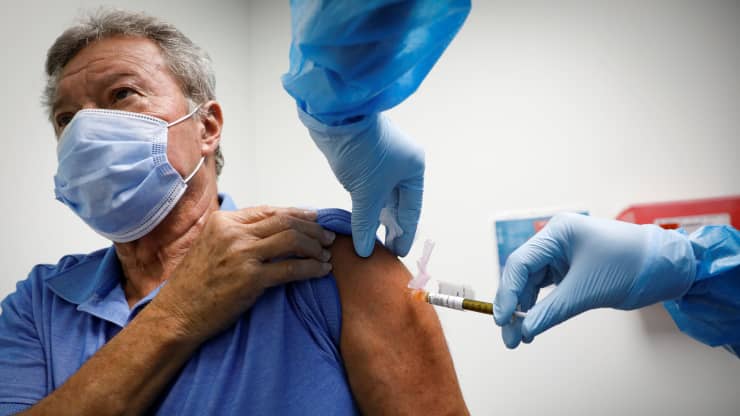Race to the COVID Vaccine: Making Strides
Droves of volunteers have already signed up to participate in the clinical trials for these vaccines. (Credit: Marco Bello, Reuters)
December 1, 2020
If you’ve been keeping up with the news lately, you’ve probably noticed that the encouraging prospect of a COVID vaccine has seemingly been inching closer to reality. It is quite a feat of scientific achievement that not even a year into this pandemic, we are talking about vaccines: not one, but several. However, the constant updates and conflicting headlines may make the information difficult to sift through. In essence, several prominent names in Big Pharma (Pfizer, Moderna, AstraZeneca, Johnson & Johnson) have begun releasing information regarding the efficacy and safety of their experimental vaccines, boasting promising results as they move through clinical trials. As of November 24th, both Pfizer and Moderna’s vaccines are around 95% effective, while AstraZeneca lags behind at a lower—albeit still impressive—90% (depending on dosage).
These percentages don’t tell the whole story, however. There are several logistical hurdles that must be cleared in order to distribute the vaccines in a practical manner, namely storage and transportation concerns. Both Pfizer and Moderna’s vaccines are centered around mRNA (a form of single-stranded genetic code), a fragile substance that requires a protective shell when inside the vaccine. Both companies have opted for lipid nanoparticles to serve as this shell, which need to be stored at incredibly low temperatures in order to fulfill this purpose. Even after rectifying this issue, support for the vaccine has to be rallied. People have been reluctant to use vaccines that have been in circulation for decades where the impacts are undisputed, so it is highly unlikely that a solution of such an experimental nature will receive instantaneous acceptance on the part of the public. To combat this, doctors are encouraging transparency on the part of the CDC (Center for Disease Control) as to the potentially harmful side effects of these vaccines, so as to not dissuade people from receiving them. The aforementioned side effects are numerous and sometimes intense, a condition that is made all the more problematic given the necessity of receiving multiple doses for certain vaccines (those of Pfizer and Moderna). Many of these side effects emulate the symptoms of COVID, but they also include headaches, soreness, and joint pain. To this end, more will be known about the side effects once the vaccines exit the clinical trials stage and are distributed to first responders and emergency workers. This would grant the general public ample knowledge of the vaccines’ properties by the time it is made available to them, thereby encouraging people to get vaccinated.
Despite the hurdles and potential for side effects, these vaccines may serve as the light at the end of the tunnel, giving us hope for the possibility of returning to normalcy at some point in the near future.

